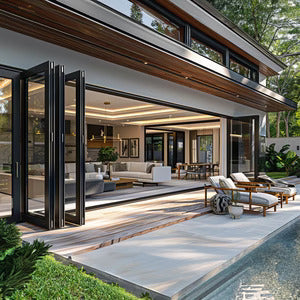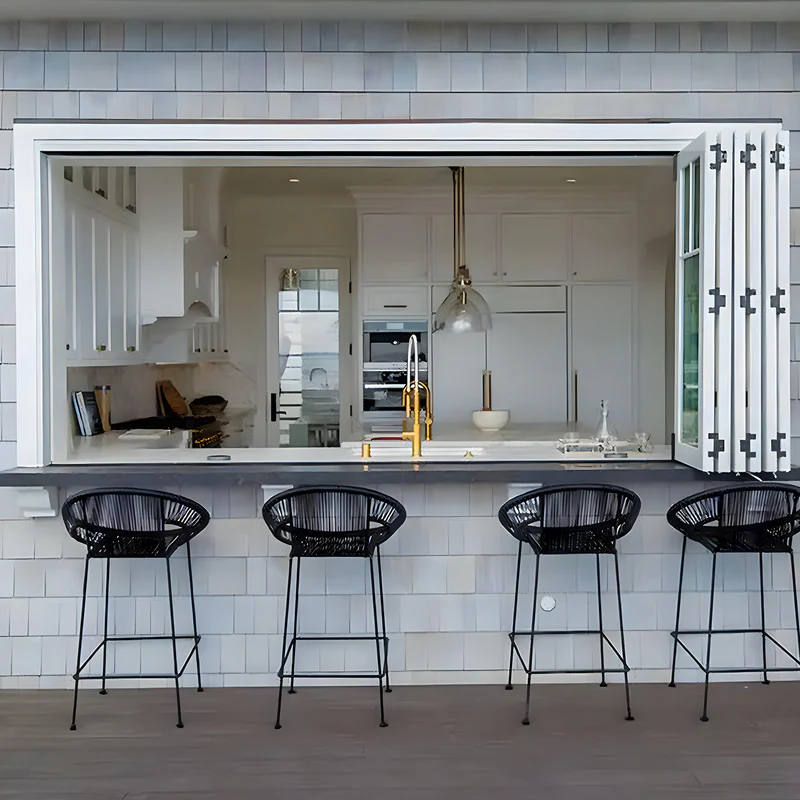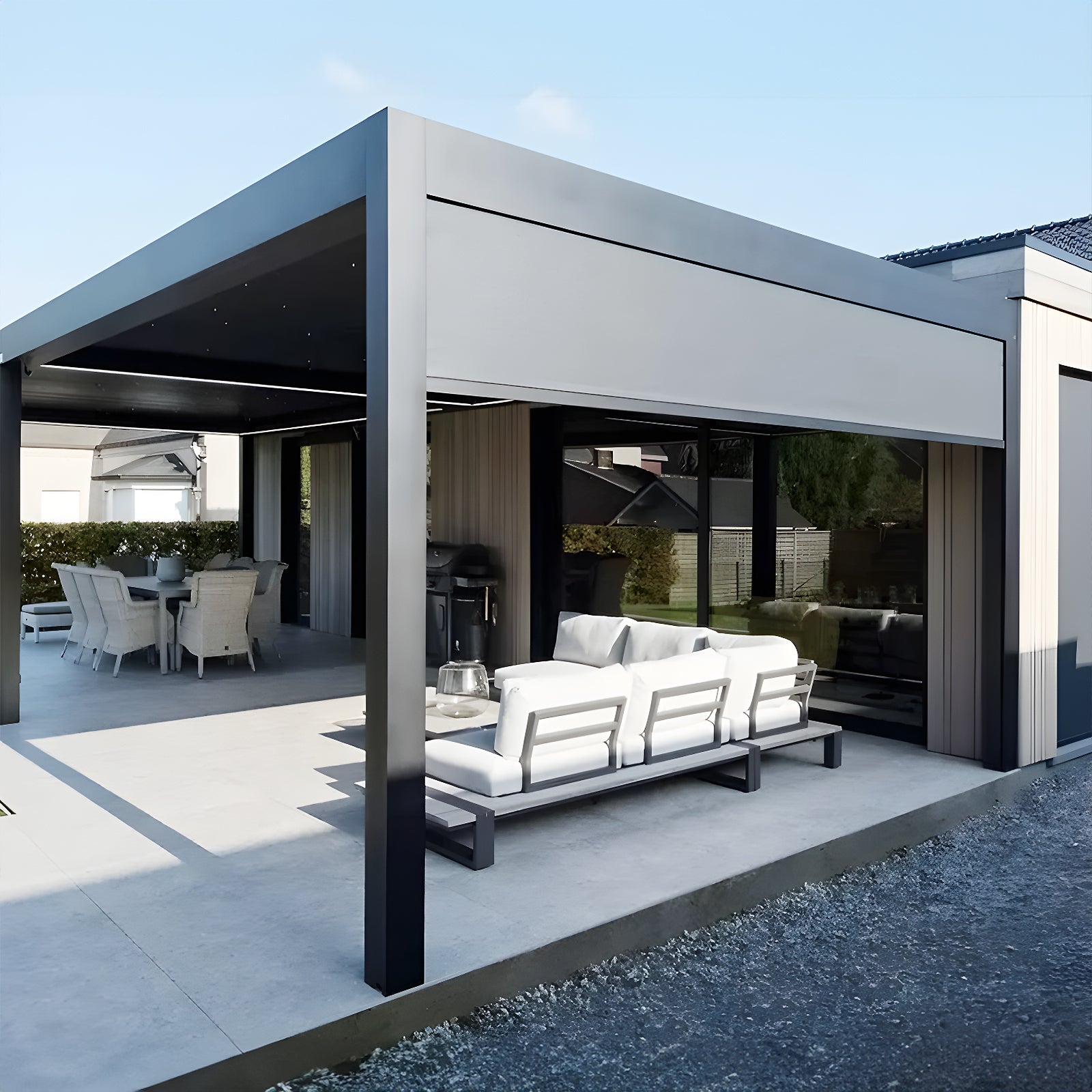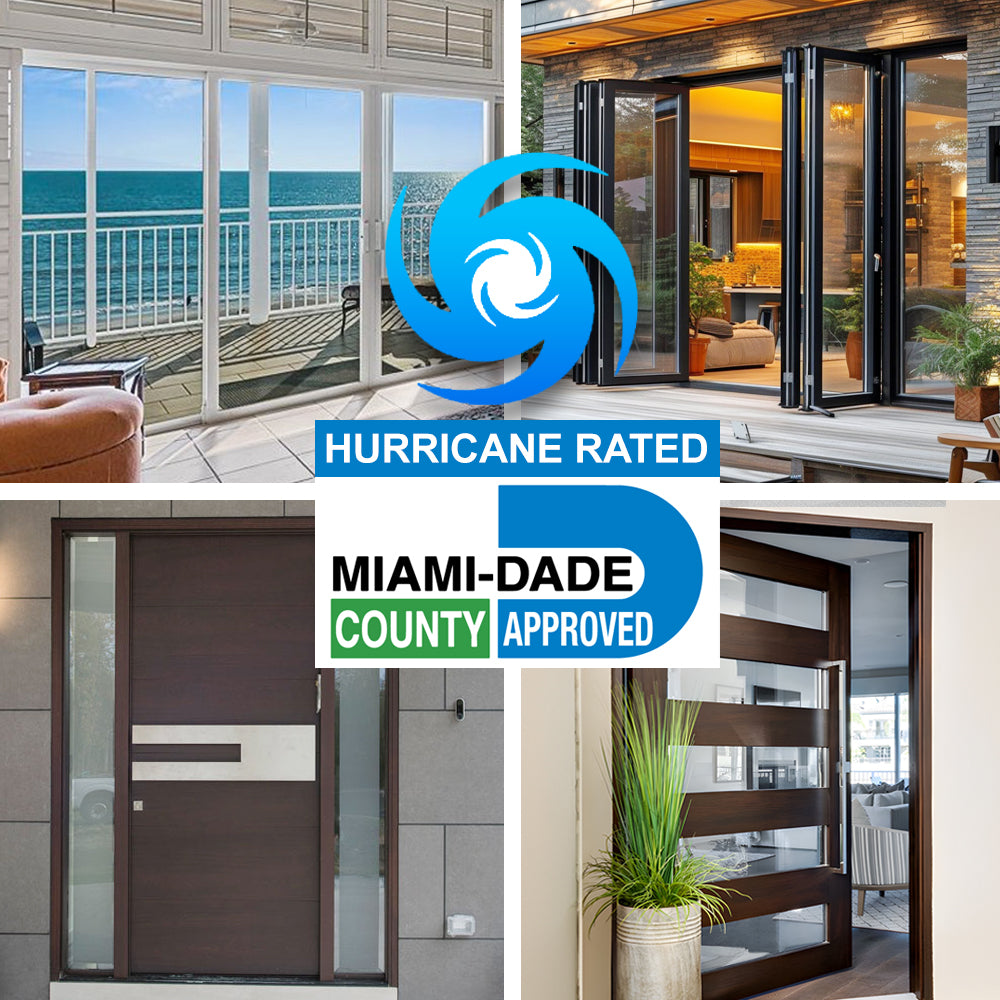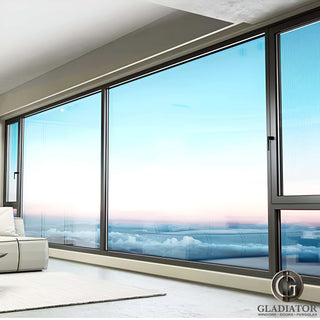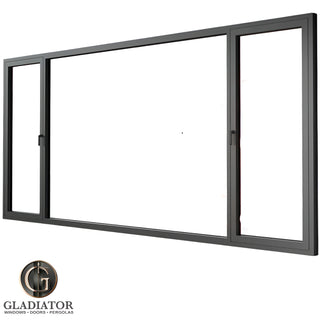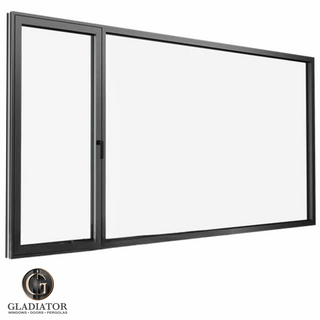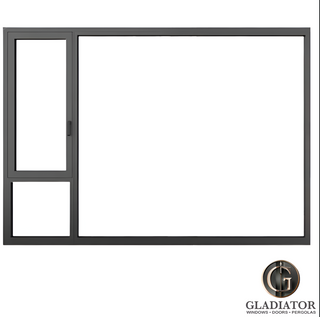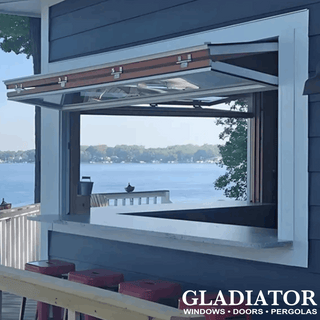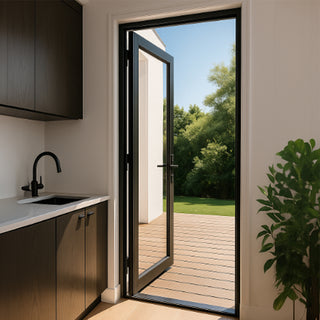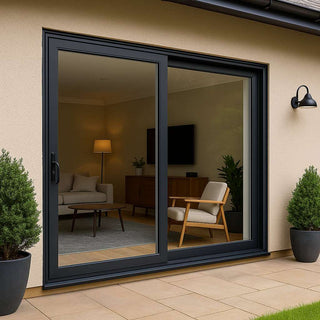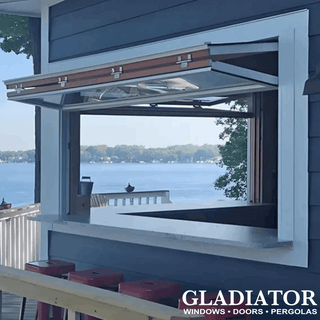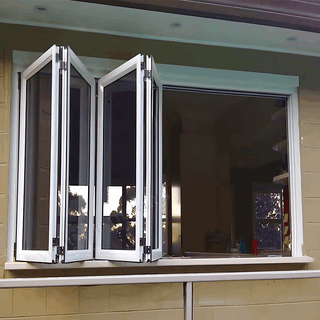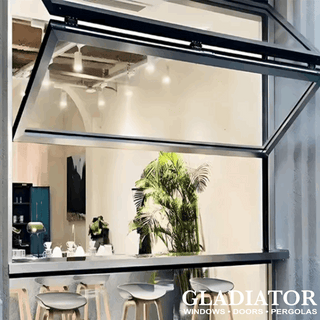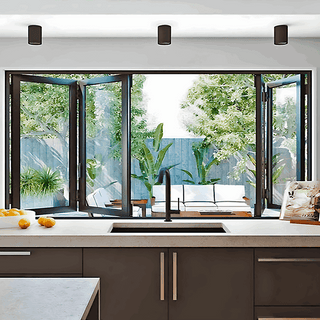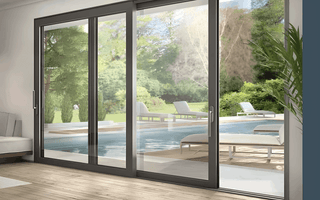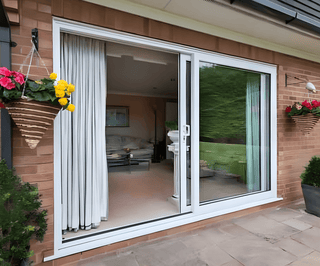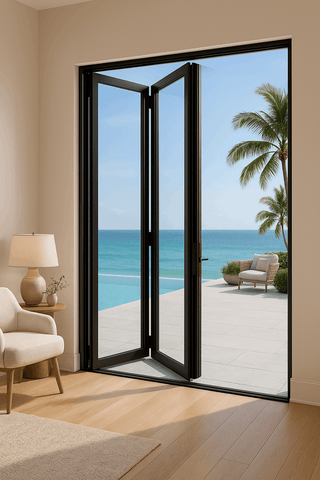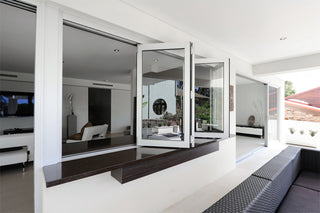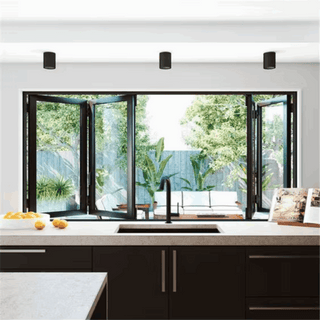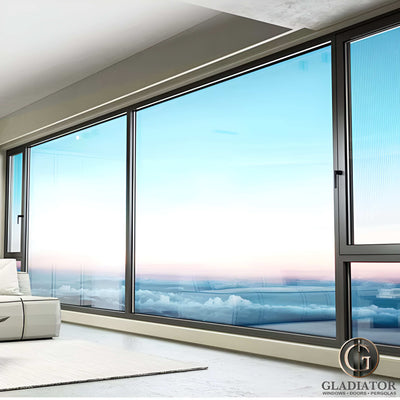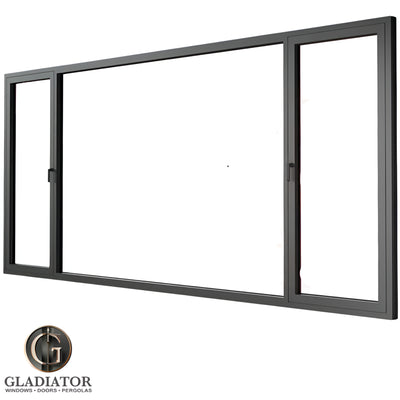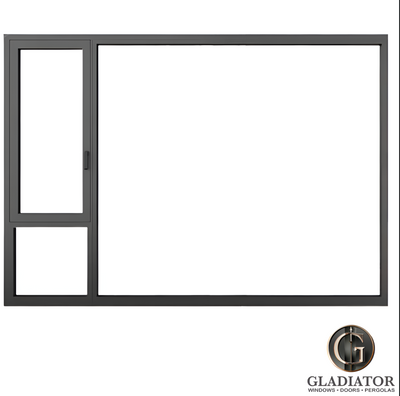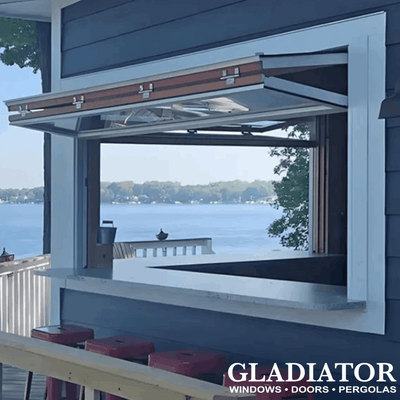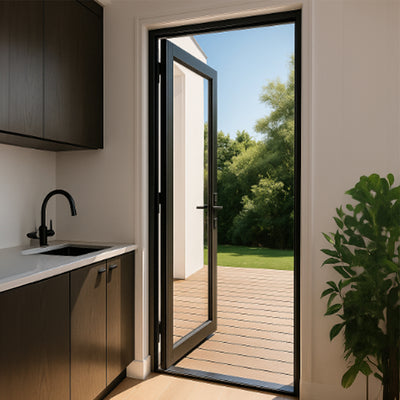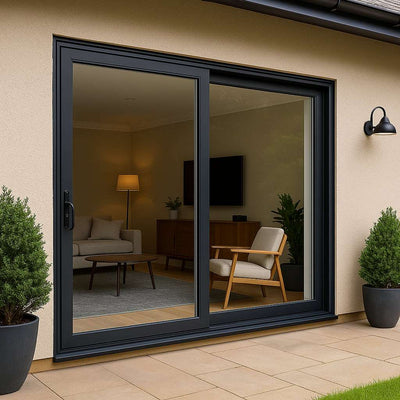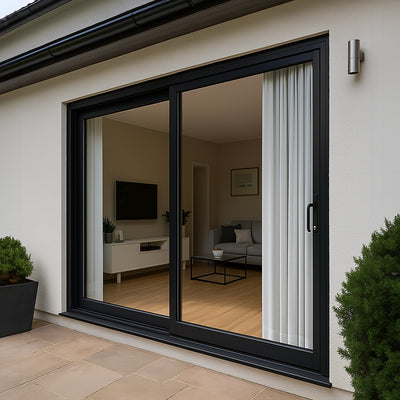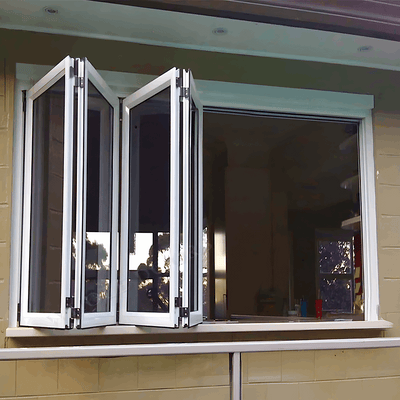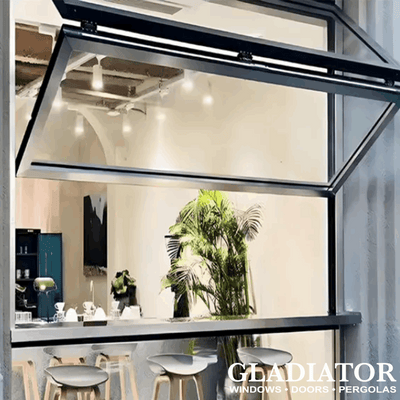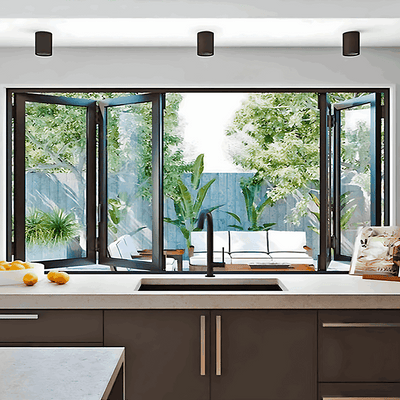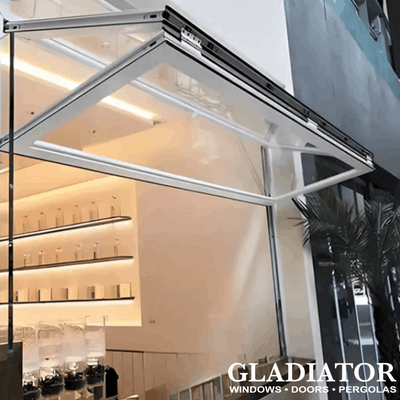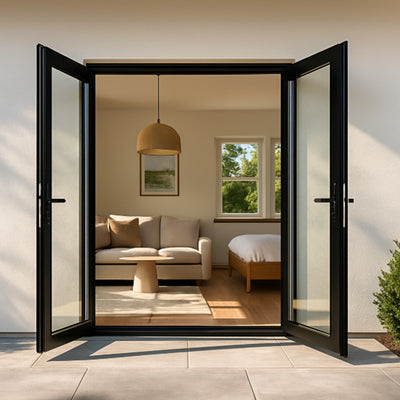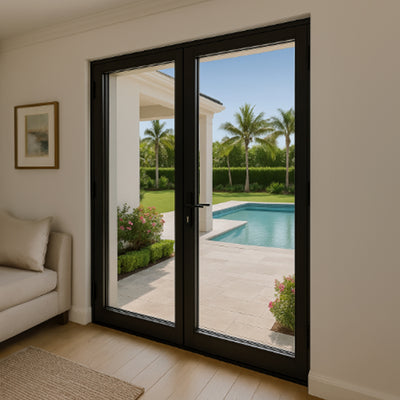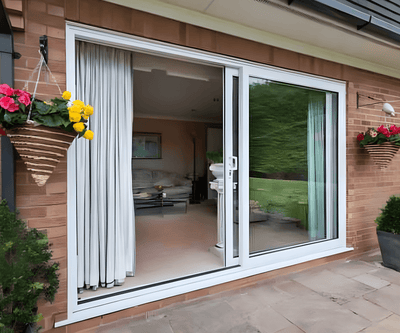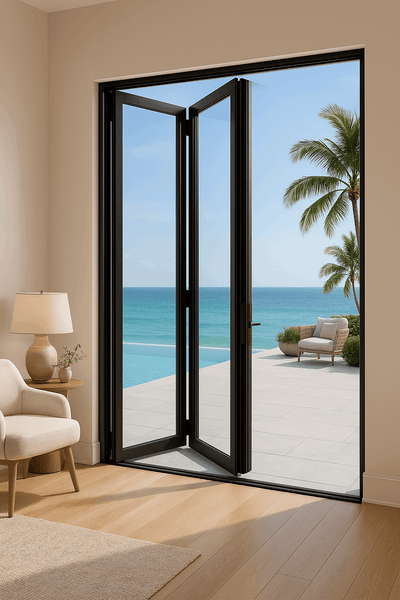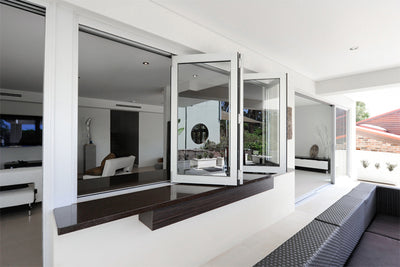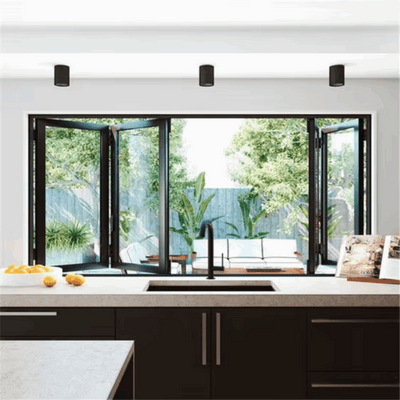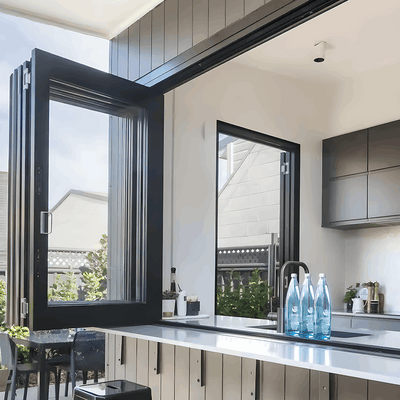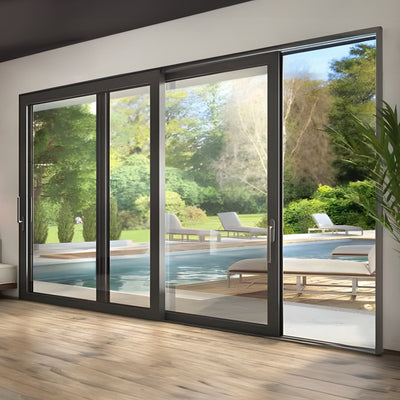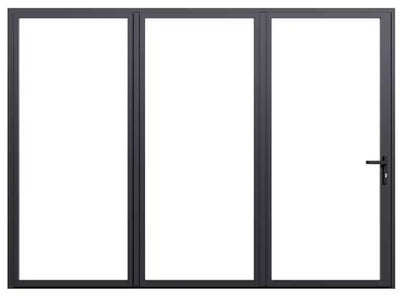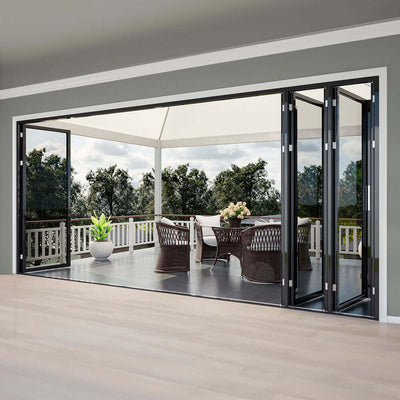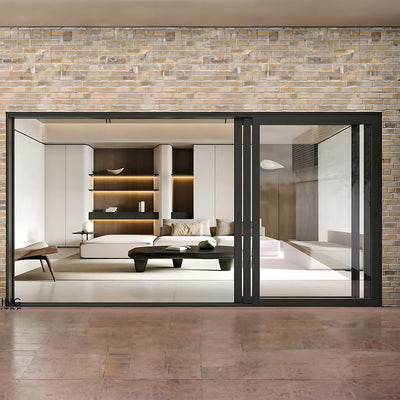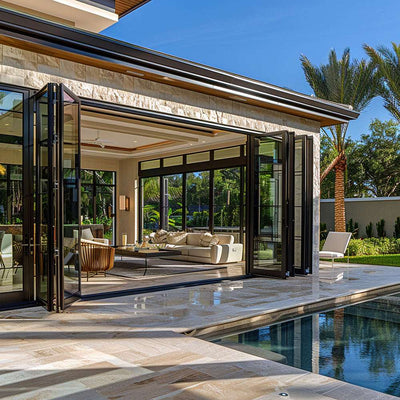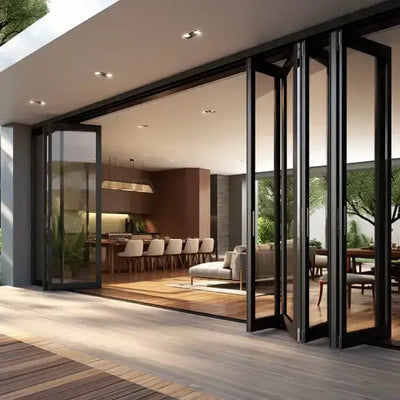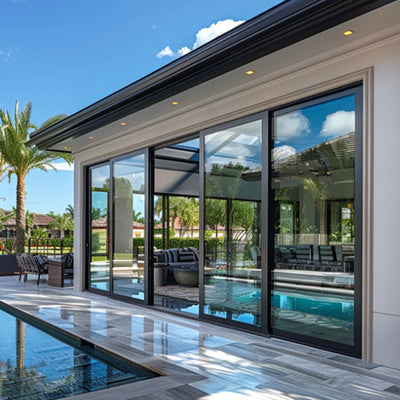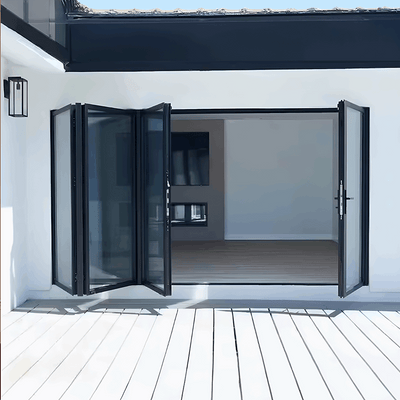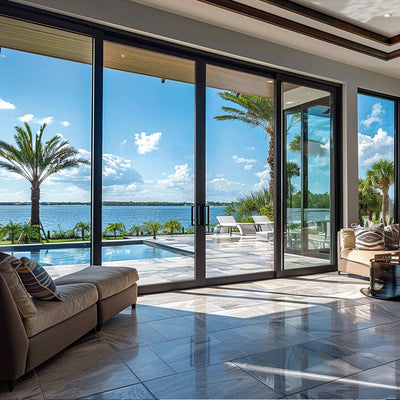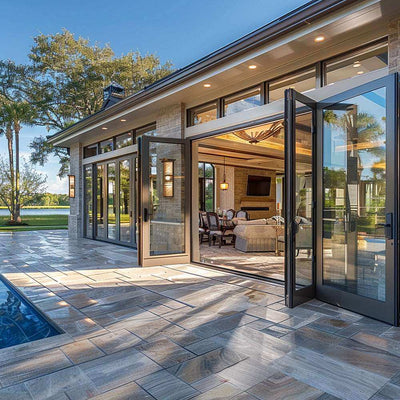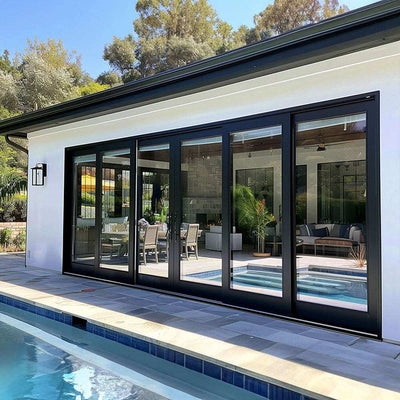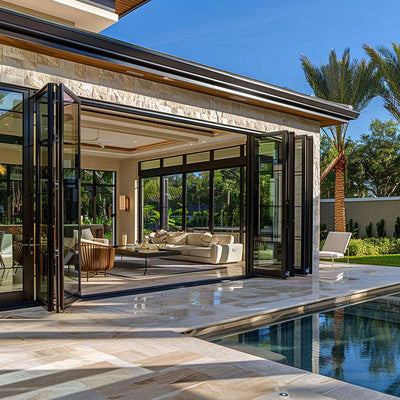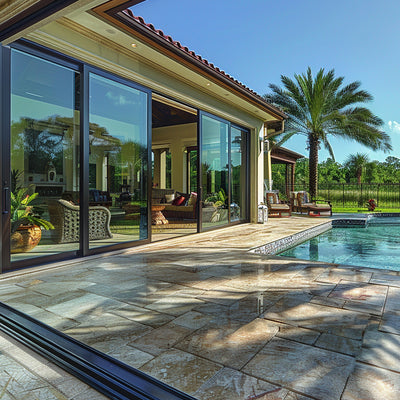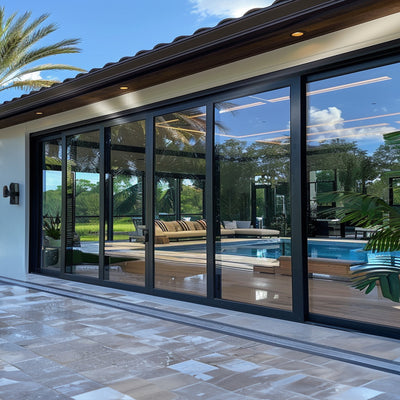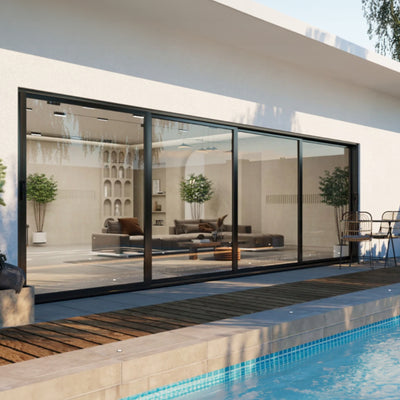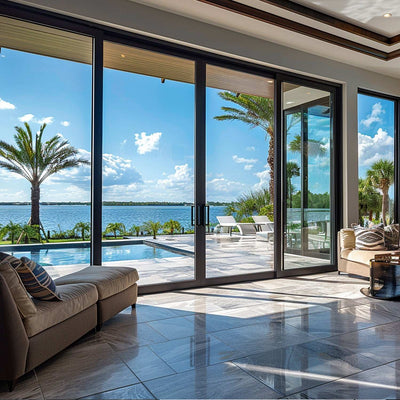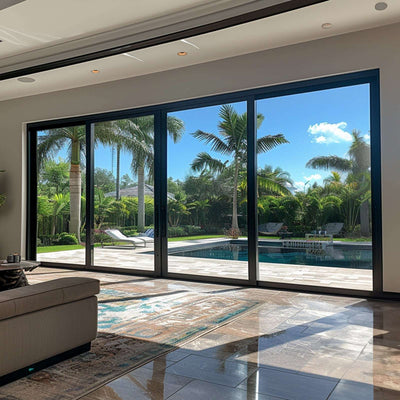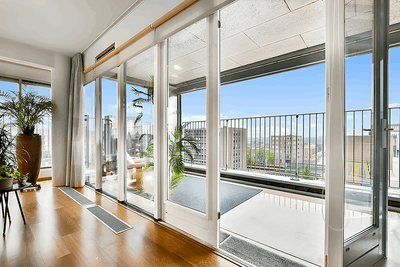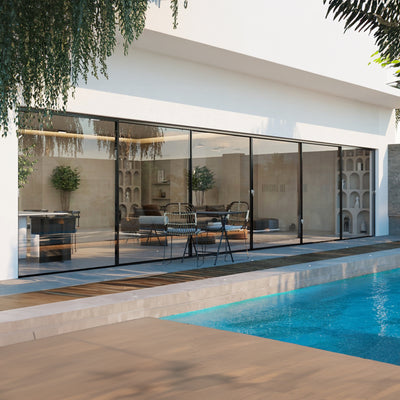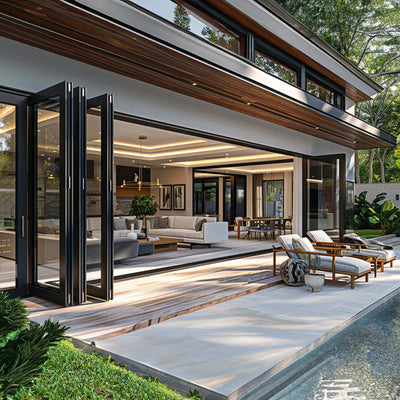Recognizing the Perfect Time for Window Replacement
Knowing when to replace your windows is a crucial home maintenance task. A persistent draft leading to higher energy bills is a clear sign, but other, less obvious indicators may suggest your windows need attention. These can range from operational problems, such as difficulty opening and closing, to visible signs of wear and tear. Understanding the difference between a window needing a minor repair versus a full replacement is vital for both your comfort and budget.
Signs Your Windows Need Replacing
A simple repair might occasionally fix a drafty window. However, recurring problems often point to a larger issue requiring complete window replacement. Here are some common indicators:
-
Difficulty Operating: Do your windows stick, jam, or resist opening smoothly? This might indicate warped frames or worn-out hardware, often signaling the end of their lifespan.
-
Visible Damage: Cracked glass, rotting wood, or gaps in the frame clearly indicate a necessary replacement. These problems compromise both security and energy efficiency.
-
Condensation Between Panes: This suggests a failed seal, allowing moisture buildup and reducing insulation, resulting in increased energy bills.
-
Drafts and Higher Energy Bills: Constantly fighting drafts or noticing a spike in heating and cooling costs likely points to inefficient windows.
-
Outside Noise: Modern windows offer excellent soundproofing. If outside noise easily enters your home, your windows are probably outdated and underperforming.
Factors Affecting Window Lifespan
Several factors influence a window's lifespan, including climate and material type. Windows in harsh climates with significant temperature swings tend to deteriorate faster. Also, certain materials like wood require more maintenance and are prone to rot and decay in humid environments. Understanding the specific conditions affecting your windows' durability is essential.
The global market for window replacement is steadily growing due to factors like increasing urbanization and the demand for energy-efficient upgrades in older homes. Learn more about this market. In the US, demand for replacement windows dipped in 2023 and 2024, but steady growth is predicted for 2025 and 2026. This highlights the importance of timing your window replacement right, balancing the need for improved efficiency with budget considerations. Ultimately, understanding these factors helps you make informed choices about investing in new, high-performance windows.
Navigating Window Materials and Styles That Actually Work
Choosing the right window materials and styles is crucial for any window replacement project. It impacts your home's energy efficiency, maintenance, and overall value. Let's explore the pros and cons of various options to help you make the best decision.
Window Materials: A Comparative Look
The window frame material is key for durability and performance. Each material comes with its own set of advantages and disadvantages. To help illustrate these, we've included a comparison table below.
-
Vinyl: Popular for affordability and low maintenance, vinyl windows offer great insulation and don't need painting. However, they can warp in extreme temperatures and have limited color options.
-
Wood: A classic choice loved for its natural beauty and excellent insulation. Wood windows can be painted or stained. However, they require regular maintenance like painting and sealing to prevent damage.
-
Fiberglass: Known for exceptional strength and energy efficiency. Fiberglass windows resist warping and fading with minimal maintenance. However, they're pricier than vinyl or wood.
-
Aluminum: Durable and lightweight, aluminum is often used in modern homes. Aluminum windows are strong and resist rust, but can be less energy-efficient.
-
Composite: Combines the best of different materials, like wood and fiberglass, for enhanced performance and looks. Composite windows are expensive but offer excellent durability and energy efficiency.
To summarize the key differences between these materials, take a look at the table below:
Window Material Comparison: A comprehensive comparison of different window materials showing their costs, energy efficiency, maintenance requirements, and expected lifespan.
| Material | Average Cost | Energy Efficiency | Maintenance Level | Expected Lifespan | Best For |
|---|---|---|---|---|---|
| Vinyl | Low | High | Low | 20-40 years | Budget-conscious, low-maintenance needs |
| Wood | Medium | High | High | 30-50 years | Traditional styles, paintable finishes |
| Fiberglass | High | Highest | Low | 50+ years | Extreme climates, durability |
| Aluminum | Medium | Low | Low | 20-40 years | Modern designs, strength |
| Composite | High | Very High | Low | 50+ years | High-performance, low-maintenance |
This table highlights the trade-offs between cost, efficiency, and upkeep. Consider your priorities and budget when making your choice.
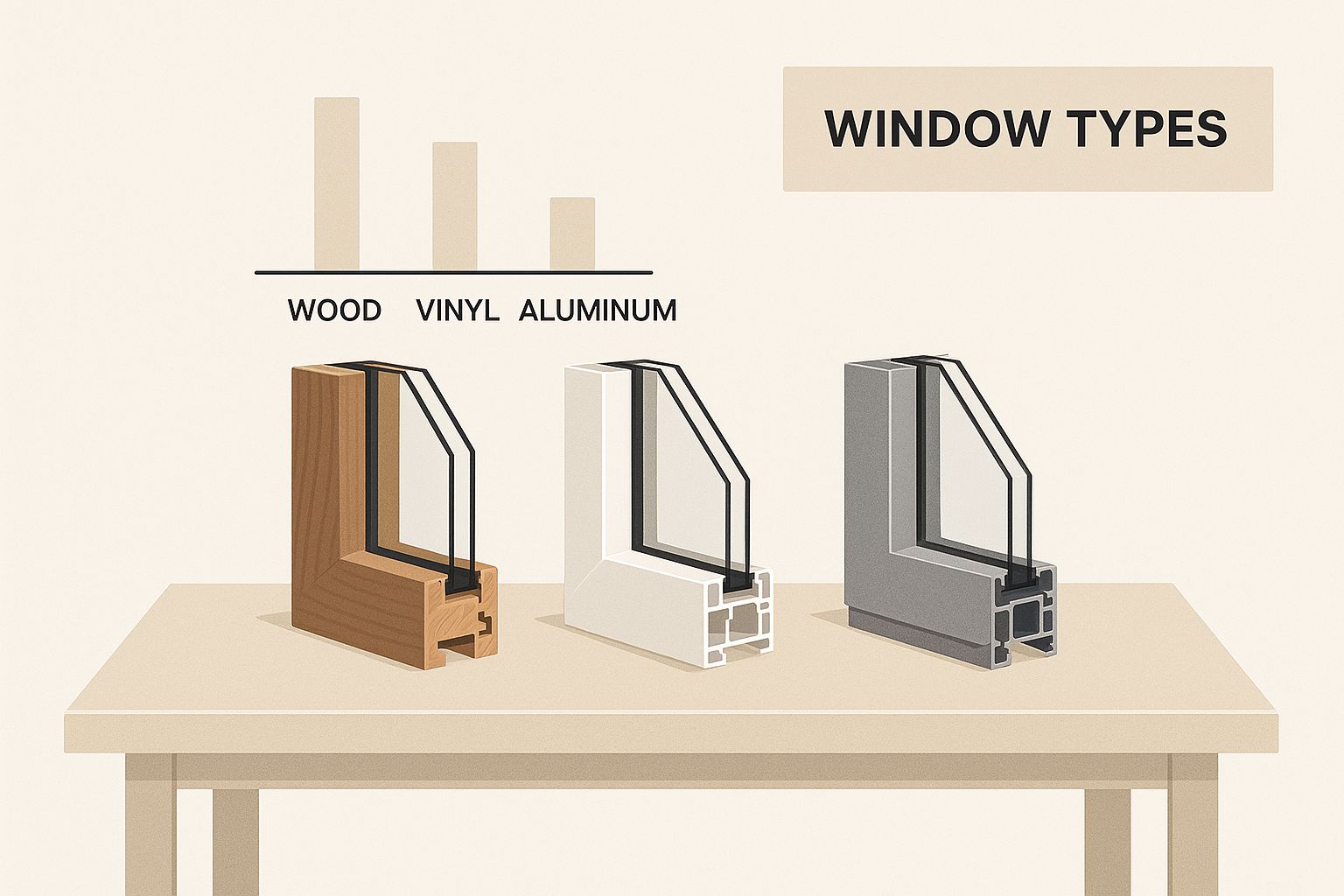
The infographic above visually compares wood, vinyl, and aluminum window frames. It demonstrates the different looks each material provides, highlighting the importance of considering both function and style.
Window Styles: Matching Form and Function
Window style is as crucial as the material. It affects your home’s appearance, ventilation, cleaning, and security. Your choice should complement your home’s architecture and your practical needs.
-
Double-Hung: Classic and versatile, these offer great ventilation and easy cleaning. Both sashes open for adjustable airflow.
-
Casement: Hinged on one side and crank outward, providing clear views and excellent ventilation. They're energy-efficient but can be harder to clean from the outside.
-
Sliding: Operate horizontally, ideal for tight spaces. They're easy to use but can be less energy-efficient.
-
Awning: Hinged at the top and swing outward, providing ventilation even in light rain. Often combined with other styles for better function.
-
Bay/Bow: Project outward, creating an architectural feature and increasing interior space. They offer panoramic views but are pricier and harder to install.
Choosing the Right Combination
The ideal combination depends on your budget, climate, and architectural style. Vinyl is cost-effective for many homes, while fiberglass suits extreme climates. Double-hung windows work for traditional homes, while casement windows complement modern designs. You might be interested in: How to master your window projects. Balancing these factors will enhance your home's beauty, function, and value.
Decoding Energy Efficiency Features That Deliver Results
Upgrading your windows is a big investment. Understanding energy efficiency features helps maximize your return. This translates to lower energy bills and increased comfort all year round. Let's explore what truly matters for your home.
Understanding U-Factor and SHGC
Two key metrics define energy efficiency in windows: U-factor and Solar Heat Gain Coefficient (SHGC). The U-factor measures how well a window prevents heat from escaping. A lower U-factor means better insulation.
SHGC measures how much solar heat passes through the window. A lower SHGC means less heat enters your home, keeping it cooler in summer.
Glazing Technologies and Their Performance
Different glazing technologies significantly impact a window's energy performance. Low-E coatings are thin, nearly invisible metal or metallic oxide layers on the glass surface. These coatings reflect infrared radiation, minimizing heat transfer while allowing visible light through.
Double and triple-pane windows trap air or gas between panes, creating an insulating barrier. This significantly improves both U-factor and SHGC, offering better energy efficiency than single-pane windows. Using argon or krypton gas between panes enhances insulation further.
Climate Considerations and Optimal Combinations
The best combination of features depends on your climate. In colder climates, a low U-factor is crucial. In hotter climates, a low SHGC is more important. Some windows offer excellent year-round performance by combining low-E coatings, multiple panes, and gas fills. Check out our guide on window projects.
A key driver for window replacement is the growing demand for energy-efficient building products and stricter building codes. Global demand for windows is projected to rise 3.9% annually, reaching about $125 billion by 2025. Find more detailed statistics here. This growth is fueled by global sustainability efforts and consumer desire for energy-saving, modern windows.
Payback Periods and Return on Investment
Energy-efficient windows have a higher upfront cost, but the long-term savings are significant. The payback period is the time it takes for energy savings to offset that initial cost. This depends on factors like your climate, energy costs, and the window's features.
Investing in windows with a low U-factor in a cold climate can lead to a shorter payback period due to heating cost reductions. You might also be interested in: How to maximize your window replacement investment. Analyzing the payback period helps determine the balance between upfront costs and long-term savings. It helps you find the best value where efficiency meets comfort.
Budgeting Strategies That Prevent Costly Surprises
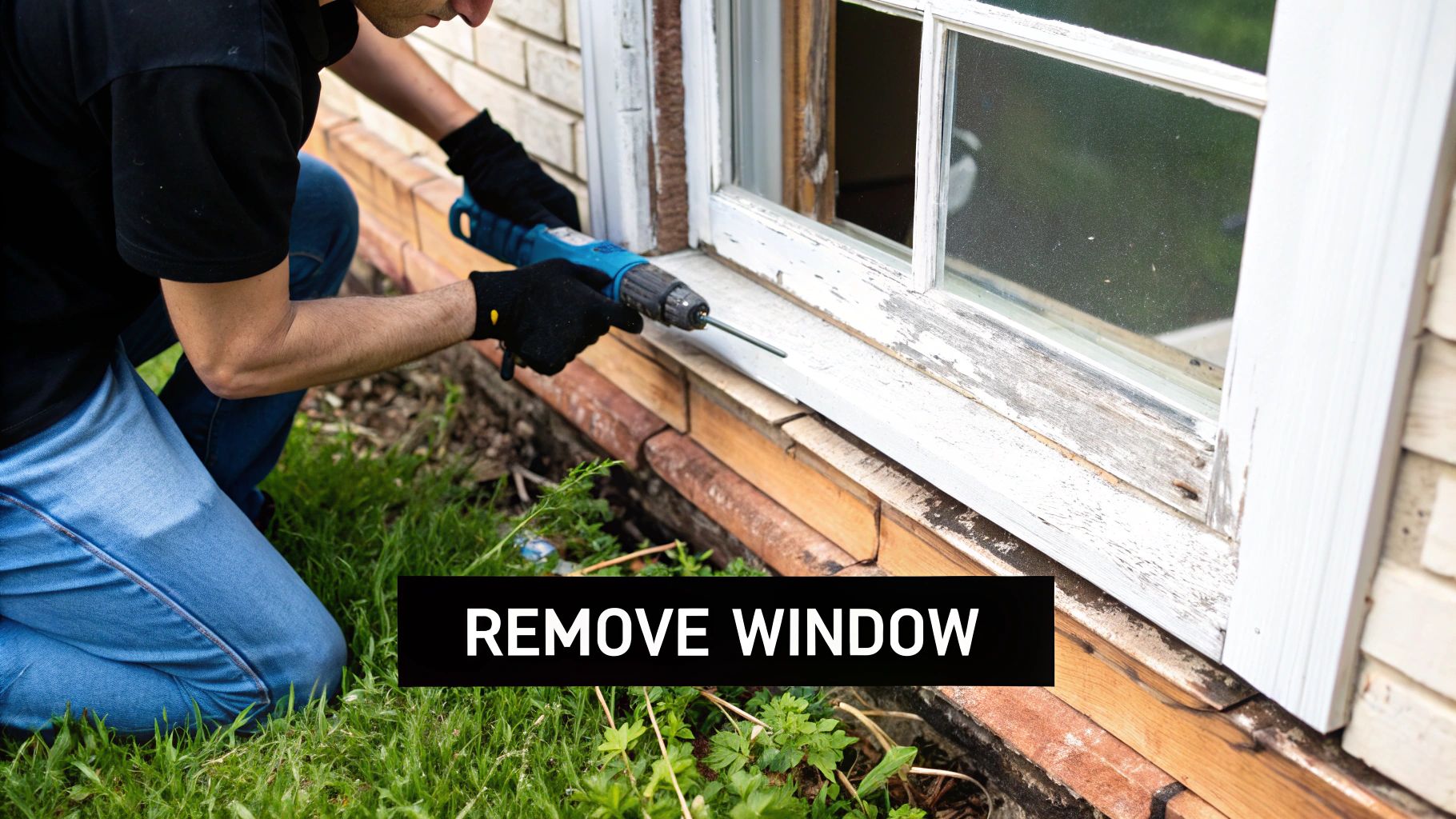
A successful window replacement relies on a realistic budget. This involves understanding the initial costs and anticipating potential hidden expenses. This guide will explore creating a budget that avoids costly surprises and keeps your project on track.
Understanding the True Costs of Window Replacement
Window replacement costs encompass more than just the windows themselves. It's important to consider both material costs and labor costs. Material costs depend on factors like window type, size, energy-efficient coatings, and custom designs. Labor costs vary based on installation complexity, the number of windows, and contractor rates.
For example, a large bay window is significantly more expensive than a standard double-hung window. A full-frame installation requires more labor and is pricier than a retrofit installation.
When considering window replacements, evaluating the impact on energy efficiency is key. For more information on how different window types affect energy use, you can research the energy efficiency of skylights.
Common Budget Blind Spots and How to Avoid Them
Unforeseen expenses often lead to budget overruns. Overlooking removal and disposal costs for old windows is a common mistake. Another is neglecting necessary repairs like fixing damaged framing or insulation. Unexpected problems, such as rot or asbestos, can significantly increase project expenses.
To mitigate these risks, get a thorough inspection before finalizing your budget. This helps identify potential issues and incorporate them into your cost calculations. Also, include a contingency fund (typically 5-10% of the total project cost) for unexpected expenses.
Phasing Your Project for Affordability
Replacing all your windows at once can be a substantial investment. If your budget is tight, consider phasing your project. This involves replacing windows in stages, spreading the cost over time.
You could begin by replacing windows in areas with the most energy loss, such as north-facing rooms or those with older, drafty windows. This lets you enjoy some benefits of new windows sooner while managing the financial burden.
Exploring Financing and Tax Incentives
Several financing options make window replacement more manageable. These include home improvement loans, lines of credit, and some credit cards with promotional financing. Also, explore tax incentives and rebates for energy-efficient window upgrades.
These incentives can substantially reduce your project's overall cost. Researching and utilizing these programs can significantly impact your budget.
Evaluating Estimates and Avoiding Low-Bid Traps
When comparing contractor estimates, be cautious of unusually low bids. These can indicate cut corners, inferior materials, or hidden charges later. A comprehensive estimate should itemize all costs, including materials, labor, permits, and disposal.
Don't hesitate to ask questions and clarify any uncertainties before signing a contract. For further insights on managing window projects, you can read How to master your window projects. This ensures accurate comparisons and helps you choose a contractor offering quality work at a fair price. A well-defined budget, combined with careful planning and informed decisions, will lead to a successful window replacement project. This allows you to enjoy the advantages of new windows without the worry of unexpected costs.
To help you estimate costs, here's a helpful breakdown:
Window Replacement Cost Breakdown
A detailed breakdown of average costs for window replacement by style, size, and additional features.
| Window Type | Basic Model Cost Range | Mid-Range Cost | Premium Cost | Additional Features Cost | Average Installation Cost |
|---|---|---|---|---|---|
| Double-Hung | $300-$700 | $500-$900 | $800-$1,200 | $50-$200 | $150-$400 |
| Casement | $350-$800 | $600-$1,000 | $900-$1,400 | $75-$250 | $200-$500 |
| Bay/Bow | $1,000-$2,500 | $1,800-$3,500 | $3,000-$5,000 | $200-$500 | $400-$800 |
| Sliding | $400-$900 | $700-$1,200 | $1,000-$1,600 | $100-$300 | $200-$500 |
| Picture | $250-$600 | $400-$800 | $700-$1,100 | $50-$150 | $100-$300 |
This table provides a general overview. Actual costs can vary based on location, specific product features, and contractor rates. Be sure to get multiple quotes for your specific project to get the most accurate pricing.
Finding Installation Professionals Who Won't Disappoint
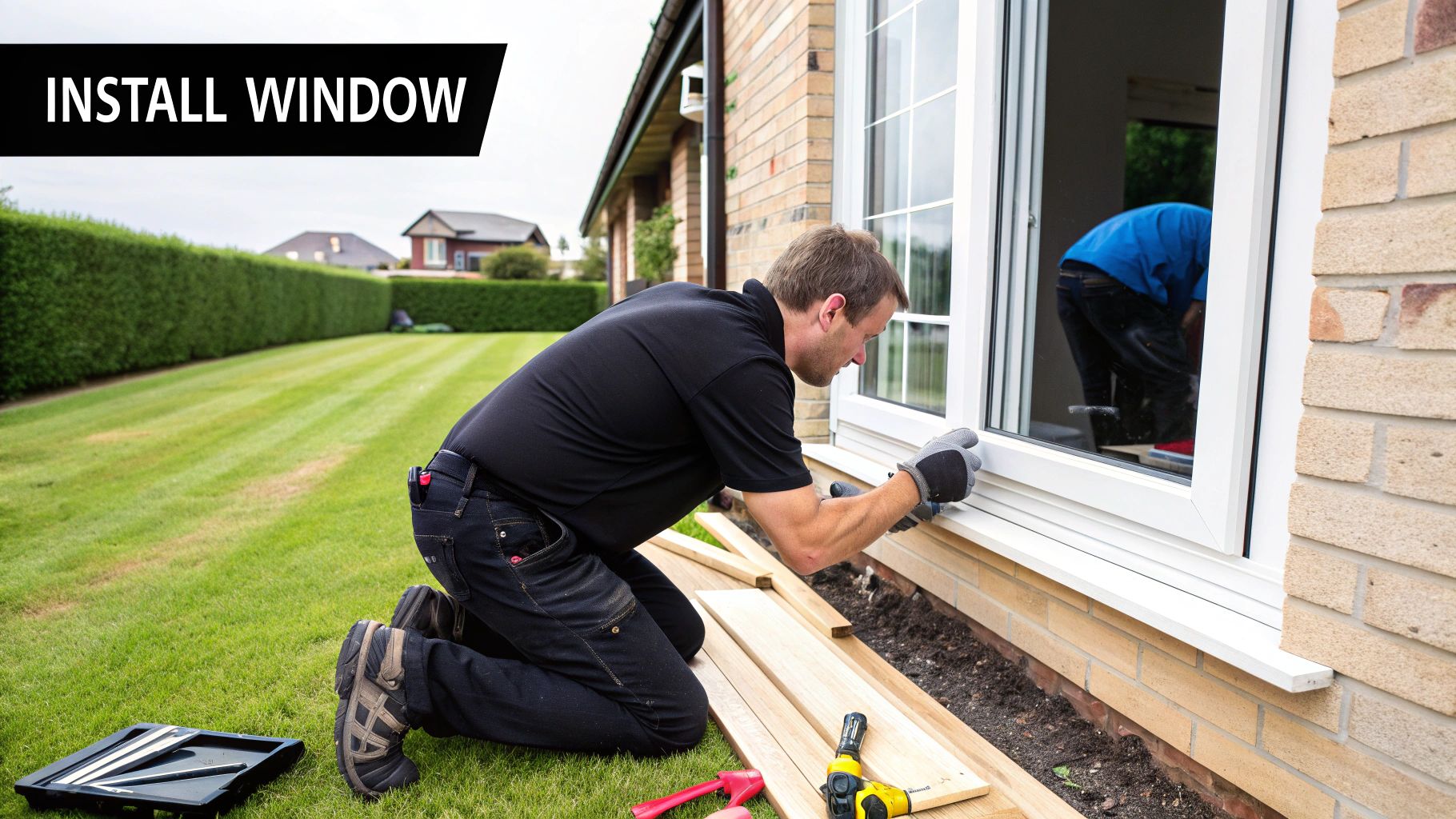
Even the best windows can underperform if installed incorrectly. This guide helps you find qualified installers to ensure your window replacement is a success. We'll cover how to vet contractors, recognize important credentials, and avoid common problems.
Vetting Your Potential Contractors
Choosing the right installer is just as important as choosing the right windows. Start by asking detailed questions that go beyond the usual sales pitch. Ask about their experience with the specific window types and materials you’ve chosen. For instance, if you're installing fiberglass windows, ask about their experience with fiberglass installation.
Request references and speak with previous clients. This gives you firsthand insights into their experiences. Ask about project timelines, communication, and overall satisfaction. Online reviews can also be helpful, but prioritize direct feedback.
Crucial Credentials and Specializations
Look for installers certified by organizations like the American Window and Door Institute (AWDI) or the InstallationMasters™ program. These certifications show a commitment to industry best practices. Also, ask about training in energy-efficient installations. This ensures optimal window performance and energy savings.
Credentials alone aren't enough. Choose installers who understand local building codes and permit requirements. This careful approach prevents problems and ensures a compliant installation. The market for window replacements is constantly evolving. In 2024, indirect sales (through distributors, wholesalers, and retailers) reached $88.8 billion globally. This segment is projected to grow at a 3.8% CAGR from 2025 to 2034. Learn more about window and door market trends.
Red Flags and Green Lights: What to Look For
Avoid contractors who push for quick decisions or offer unusually low bids. These can indicate potential problems or hidden fees. A reliable installer will provide a detailed, transparent estimate with all costs, including materials, labor, permits, and disposal.
A good sign is a contractor who listens to your needs, offers solutions for your home, and communicates clearly. They'll answer your questions thoroughly and provide a realistic timeline. For more helpful tips, check out our blog post: How to master your window projects. This collaborative approach builds trust and ensures a smooth process.
Premium vs. Standard Installation: Justifying the Cost
Premium installation often uses specialized techniques, better sealants, and enhanced weatherproofing. This results in improved energy efficiency, noise reduction, and overall performance. While standard installation might work in some cases, premium installation is a good investment for high-performance windows or complex installations. Consider the costs and benefits to find the best option for your needs and budget.
The Replacement Process: What Actually Happens at Your Home
Preparing for your window replacement project is key for a smooth, efficient installation. This section provides a realistic walkthrough of the entire process, from initial preparation to the final inspection.
Before Installation Day: Setting the Stage for Success
Before the installation crew arrives, a few preparatory steps can significantly streamline the process and protect your home. First, clear the area around your windows, both inside and outside. Remove furniture, curtains, blinds, and any other obstructions. This gives installers easy access and minimizes the risk of damage.
Next, protect your floors and furniture with drop cloths or plastic sheeting. Window replacement can generate dust and debris, so covering vulnerable surfaces is essential. Also, trim any bushes or trees outside that might interfere with the installation. This helps the crew and prevents potential landscaping damage.
Installation Day: A Step-by-Step Breakdown
On installation day, the crew will typically begin by protecting your home’s interior with drop cloths and other protective materials. The next step is removing the old windows. This involves carefully detaching the existing window and preparing the opening.
Following removal, the installers will inspect the opening for any damage or rot. If issues are found, they'll address them before proceeding. The new window is then carefully positioned and secured in the opening. The crew will ensure a proper fit and seal to prevent drafts and leaks. Finally, they'll apply insulation around the window frame for maximum energy efficiency.
Considering door security after choosing your window replacement is a smart move. Guides like this one on How to Install a Security Door: Step-by-Step Guide offer valuable information and added peace of mind.
Realistic Timeframes and Potential Delays
The installation timeframe depends on the project's scope. Replacing a few windows might take a day or two, while a whole-house replacement could take a week or more. Factors influencing the schedule include weather, unexpected structural issues, and material availability.
Inclement weather can delay outdoor work, while discovering rot or other structural problems can add time. Discussing potential delays with your contractor and building flexibility into your schedule is important.
Post-Installation Inspection: Ensuring Quality and Performance
After installation, a thorough inspection is essential. Check that the windows open and close smoothly, lock securely, and are properly sealed. Inspect the caulking and weather stripping for gaps or imperfections.
Look for any damage that may have occurred during installation. Contact your contractor promptly if you notice any issues. This final check ensures your new windows will perform as expected, providing comfort and energy efficiency.
Common Installation Challenges and Solutions
Even with careful planning, installers sometimes face challenges. One common issue is discovering rot or damage around existing window frames. Experienced installers will have solutions, such as repairing the damaged area.
Another challenge is dealing with uneven or out-of-square window openings, which can make achieving a proper fit and seal difficult. Skilled installers use shims and other techniques to ensure the new window is level and plumb.
Occasionally, discrepancies arise between the measured window opening and the manufactured window size. While less common with custom-made windows, it can still happen. Installers will make adjustments to ensure a proper fit. Open communication with your contractor is crucial throughout the process for a successful window replacement experience.
Maximizing Lifespan: Beyond Basic Window Maintenance
Your new windows are a significant investment. Like any valuable asset, they need proper care to ensure they perform well for years to come. While regular cleaning is important, a more thorough maintenance routine can significantly extend their lifespan and prevent expensive repairs. This section explores the best practices for keeping your windows in top condition.
Preserving Different Window Components
Different window components require specific care. Let's start with frame materials. Vinyl requires minimal upkeep; a simple wipe-down is usually sufficient. Wood frames, however, need regular painting or staining and sealing to prevent rot and decay. Fiberglass, known for its durability, benefits from occasional cleaning to maintain its appearance. Aluminum frames should be cleaned and checked for corrosion.
Hardware components, such as locks, hinges, and cranks, need lubrication for smooth operation. A light application of a silicone-based lubricant can prevent sticking and extend the lifespan of these parts. For glass treatments, like Low-E coatings, use gentle cleaners and avoid abrasive materials that could scratch the coating.
Identifying Early Warning Signs
Spotting early warning signs can save you from costly repairs. Difficulty opening or closing a window could indicate a problem with the hardware or a warped frame. Condensation between panes signals a failed seal, reducing energy efficiency and potentially leading to further damage. Drafts around the frame suggest worn weatherstripping or sealant, compromising insulation and comfort.
You might be interested in: How to master your window projects.
Seasonal Maintenance Checklists
Seasonal maintenance checklists provide a structured approach to window care. In the spring, clean your windows thoroughly after the winter weather. Check for any damage and repair or replace worn weatherstripping. During the summer, lubricate hardware and inspect screens for tears. In the fall, clean windows again and ensure proper sealing to prevent drafts. Finally, in the winter, check for air leaks and address them quickly.
DIY vs. Professional Repairs
Some adjustments and repairs are easy to do yourself, while others require professional help to maintain warranty coverage. Adjusting hardware or replacing weatherstripping are often simple DIY tasks. However, repairing or replacing damaged frames or glass is best left to professionals to ensure the job is done correctly and your warranty remains valid.
Ready to upgrade your windows? Visit Gladiator Window and Doors today for a free consultation. Discover our wide selection of high-quality, custom-made windows and doors at unbeatable prices. We offer the lowest prices in the USA, backed by our Best Offer Guarantee. Choose Gladiator for superior craftsmanship, the best warranty in the industry, and exceptional value.







